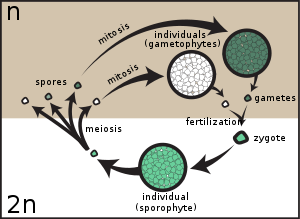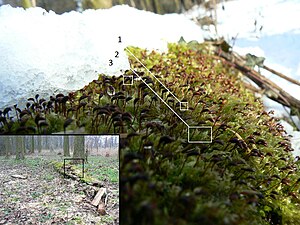**Definition and Role in Plant Life Cycles**:
– The term ‘spore’ originates from the ancient Greek word σπορά, meaning seed or sowing.
– Spores germinate into sporelings, contributing to the alternation of generations in plant life cycles.
– Spores are unicellular and give rise to haploid gametophytes, unlike seeds that contain developing embryos.
– Spores are the initial cell of a gametophyte, while seeds produce diploid sporophytes.
**Classification of Spore-Producing Organisms**:
– Plants: Vascular plants can be homosporous or heterosporous.
– Heterosporous plants produce two different-sized spores, namely megaspores and microspores.
– Fungi: Fungi produce spores during sexual and asexual reproduction.
– Spores in fungi are typically haploid and mature through mitotic division.
**Classification of Spores**:
– Spores can be categorized based on their producing structure, function, origin, and mobility.
– They have complex patterns or ornamentation on their surfaces.
– Spores can be alete, monolete, or trilete based on the number of lines.
– The number of colpi distinguishes major groups of plants.
**Dispersal and Origin**:
– Fungi employ mechanisms like forcible ejection for spore dispersal.
– Spores are designed for long-distance travel through the air, aided by surface structures like hydrophobins.
– Spores found in microfossils date back to the mid-late Ordovician period.
– Initial functions of spores may relate to their appearance before or after land plants, with contributions to paleontology and plant phylogenetics.
**Examples and Significance**:
– Envelope-enclosed spore tetrads are among the earliest evidence of plant life on land.
– Trilete spores resembling modern cryptogamic plants appeared in the fossil record during the Ordovician period.
– Spores play a crucial role in food microbiology, bacterial research, and plant phylogenetics.
– Various types of spores, including those from moss, ferns, horsetails, and fossil plants, showcase their diversity and importance.
This article needs additional citations for verification. (July 2007) |
In biology, a spore is a unit of sexual (in fungi) or asexual reproduction that may be adapted for dispersal and for survival, often for extended periods of time, in unfavourable conditions. Spores form part of the life cycles of many plants, algae, fungi and protozoa. They were thought to have appeared as early as the mid-late Ordovician period as an adaptation of early land plants.


Bacterial spores are not part of a sexual cycle, but are resistant structures used for survival under unfavourable conditions. Myxozoan spores release amoeboid infectious germs ("amoebulae") into their hosts for parasitic infection, but also reproduce within the hosts through the pairing of two nuclei within the plasmodium, which develops from the amoebula.
In plants, spores are usually haploid and unicellular and are produced by meiosis in the sporangium of a diploid sporophyte. In some rare cases, diploid spore is also produced in some algae, or fungi. Under favourable conditions the spore can develop into a new organism using mitotic division, producing a multicellular gametophyte, which eventually goes on to produce gametes. Two gametes fuse to form a zygote, which develops into a new sporophyte. This cycle is known as alternation of generations.
The spores of seed plants are produced internally, and the megaspores (formed within the ovules) and the microspores are involved in the formation of more complex structures that form the dispersal units, the seeds and pollen grains.
